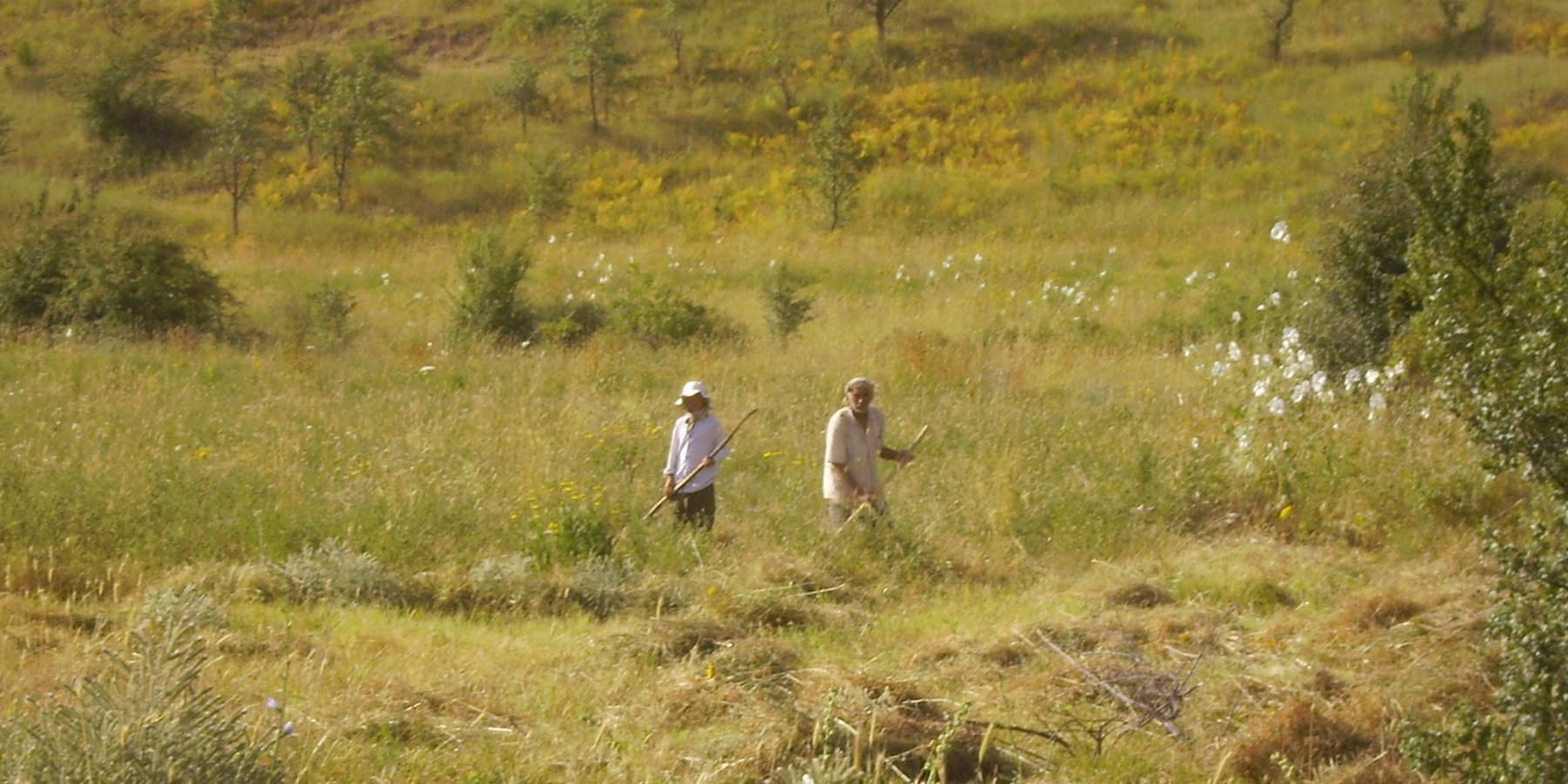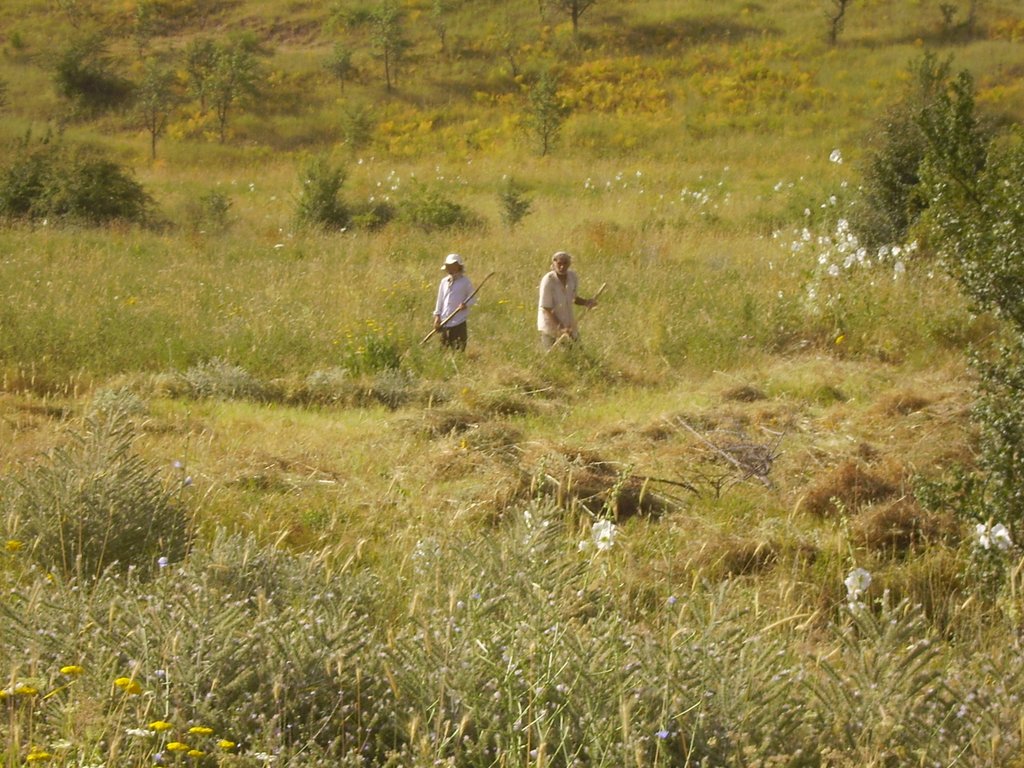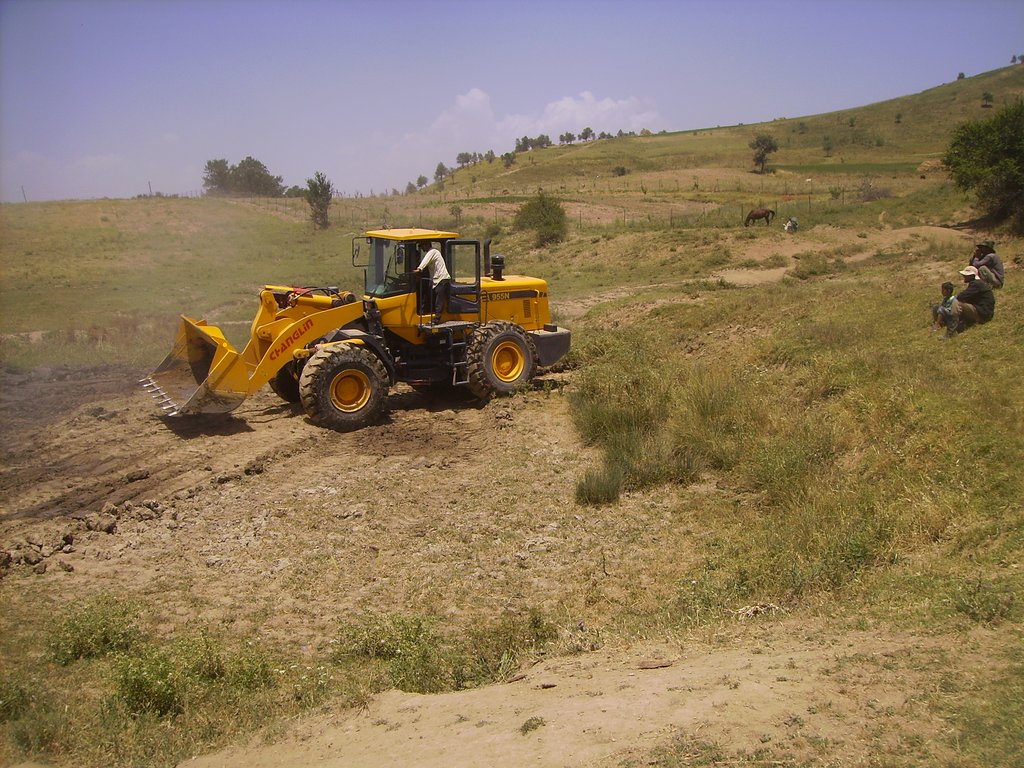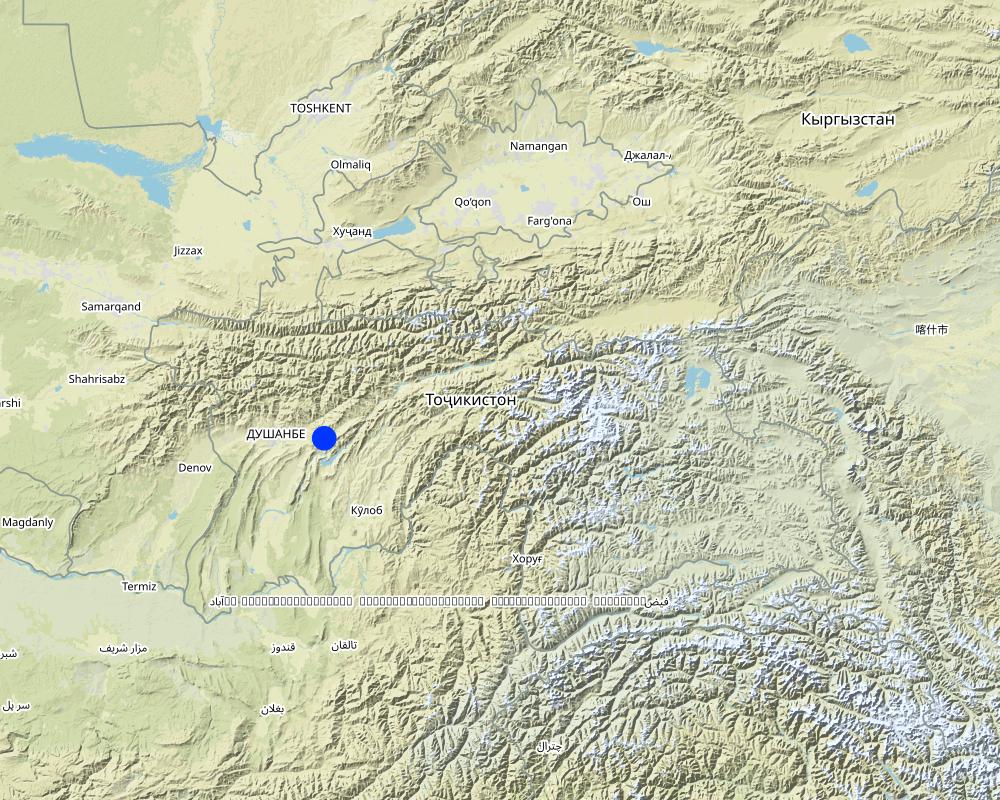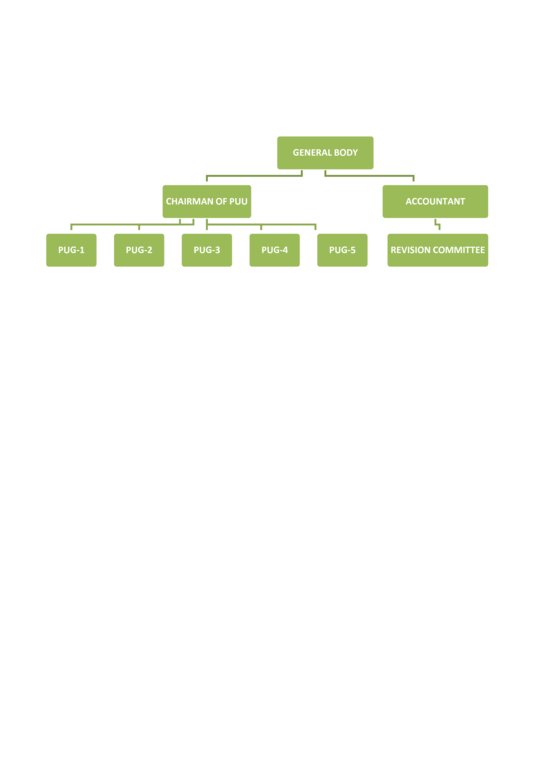Sustainable livestock and pasture management [ប្រទេសតាហ្ស៊ីគីស្ថាន]
- ការបង្កើត៖
- បច្ចុប្បន្នភាព
- អ្នកចងក្រង៖ Kamolidin Abdulloev
- អ្នកកែសម្រួល៖ –
- អ្នកត្រួតពិនិត្យច្រើនទៀត៖ Farrukh Nazarmavloev, William Critchley, Rima Mekdaschi Studer
Pasture Users Unions
approaches_3713 - ប្រទេសតាហ្ស៊ីគីស្ថាន
ពិនិត្យមើលគ្រប់ផ្នែក
ពង្រីកមើលទាំងអស់ បង្រួមទាំងអស់1. ព័ត៌មានទូទៅ
1.2 ព័ត៌មានលម្អិតពីបុគ្គលសំខាន់ៗ និងស្ថាប័នដែលចូលរួមក្នុងការវាយតម្លៃ និងចងក្រងឯកសារនៃវិធីសាស្ត្រផ្សព្វផ្សាយ
ឈ្មោះគម្រោងដែលបានចងក្រងឯកសារ/ វាយតម្លៃលើវិធីសាស្ត្រផ្សព្វផ្សាយ (បើទាក់ទង)
Environmental Land Management and Rural Livelihood Projectឈ្មោះអង្គភាពមួយ (ច្រើន) ដែលបានចងក្រងឯកសារ/ វាយតម្លៃលើវិធីសាស្ត្រផ្សព្វផ្សាយ (បើទាក់ទង)
Committee for Environment Protection of Tajikistan (Committee for Environment Protection of Tajikistan) - ប្រទេសតាហ្ស៊ីគីស្ថាន1.3 លក្ខខណ្ឌទាក់ទងទៅនឹងការប្រើប្រាស់ទិន្នន័យដែលបានចងក្រងតាមរយៈវ៉ូខេត
តើពេលណាដែលទិន្នន័យបានចងក្រង (នៅទីវាល)?
02/04/2018
អ្នកចងក្រង និង(បុគ្គលសំខាន់ៗ)យល់ព្រមទទួលយកនូវលក្ខខណ្ឌនានាទាក់ទងទៅនឹងការប្រើប្រាស់ទិន្នន័យដែលបានចងក្រងតាមរយៈ វ៉ូខេត:
បាទ/ចា៎
1.4 ការយោងមួយ (ច្រើន) ទៅលើ (កម្រង) បញ្ជីសំណួរនៃបច្ចេកទេស SLM
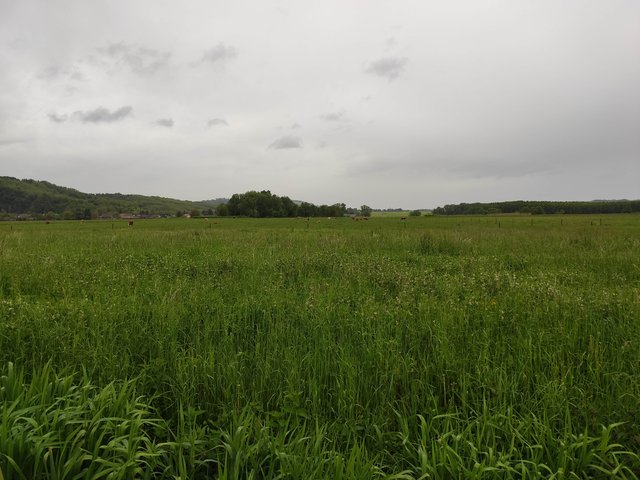
Meadows and pastures [ប្រទេសហុងគ្រី]
Permanent meadows or pastures are more effective in controlling land degradation than arable cropping. They are especially appropriate in hilly regions on sloping land where the risk of water erosion is high.
- អ្នកចងក្រង៖ Brigitta Szabó
2. ការពណ៌នាអំពីវិធីសាស្ត្រផ្សព្វផ្សាយ SLM
2.1 ពណ៌នាសង្ខេបខ្លីពីវិធីសាស្ត្រផ្សព្វផ្សាយ
Sustainable livestock and pasture management is implemented through creating Pasture Users Unions (PUU) which design and implement pasture and livestock management plans.
2.2 ពណ៌នាលម្អិតពិវិធីសាស្ត្រផ្សព្វផ្សាយ
ពណ៌នាលម្អិតពិវិធីសាស្ត្រផ្សព្វផ្សាយ:
The Government of Tajikistan is implementing a project, funded by the Pilot Program for Climate Resilience (PPCR) and the Global Environment Facility (GEF), with the objective of enabling rural people to build up their productive assets in ways that sustainably improve natural resource management, and build resilience to climate change in selected climate-vulnerable sites. Livestock are an integral part of the agriculture sector, although there has been a shift to more extensive livestock grazing from the intensive livestock farming system practiced before independence. Today, more than 90% of livestock are held in household farms, indicating the importance of livestock to rural livelihoods, and the system is based primarily on grazing, supplemented by limited cultivated fodder crops and minimal use of concentrates.
Pastures comprise about 35% of Tajikistan’s total land area and 80% of its agricultural land - however substantial degradation is taking place. Pasture degradation may be exacerbated by climate change, which is likely to increase variability in water availability and temperature, and may result in local droughts and floods. Properly managed pasture helps control water flows in ways which contribute to mitigating floods and droughts, maintaining soil conservation and fertility, and providing habitats for wild plants and animals. The aim of the activity is to introduce sustainable community-managed pasture/fodder-based livestock production systems in villages in the Faizobod district of jamoat Dustmurod Aliev, situated in the mid-hills of Tajikistan. Approximate membership of the Pasture Users Unions (PUU) is between 50 and 200 households per village depending on size, with between 6 and 10 villages per jamoat. Comprehensive pasture and fodder assessments and evaluation of the feed/fodder balances are carried out, followed by the development of Pasture and Livestock Management Plans (PLMP) for various interventions including; improvement of pasture productivity through rotational grazing, protecting areas for regeneration, pasture rehabilitation, improving access to remote pastures, and supplementary fodder production; animal health requirements and breed improvement measures; infrastructure to access and use remote pastures, such as spot road improvements, and stock watering points. By virtue of the fact that users will welcome this approach in their jamoats, they will be able to manage the broad issues of pasture degradation, animal health and fodder production. Above all it will help farmers to control the balance between livestock and fodder.
2.3 រូបភាពនៃវិធីសាស្ត្រផ្សព្វផ្សាយ
កំណត់សំគាល់ទូទៅរបស់រូបថត:
Photos shows how the Pasture User Union maintains infrastructure in the pastures, giving them the opportunity to collect enough fodder for the winter time and keeping access open to the most distant pasture lands
2.4 វីឌីអូនៃវិធីសាស្ត្រផ្សព្វផ្សាយ
2.5 ប្រទេស/តំបន់/ទីតាំងកន្លែង ដែលវិធីសាស្ត្រផ្សព្វផ្សាយត្រូវបានអនុវត្តន៍
ប្រទេស:
ប្រទេសតាហ្ស៊ីគីស្ថាន
តំបន់/រដ្ឋ/ខេត្ត:
Faizobod district
បញ្ជាក់បន្ថែមពីលក្ខណៈនៃទីតាំង:
Jamoat Dustmurod Aliev
Map
×2.6 កាលបរិច្ឆេទនៃការចាប់ផ្តើម និងបញ្ចប់នៃវិធីសាស្រ្តផ្សព្វផ្សាយនេះ
សូមបញ្ជាក់ឆ្នាំដែលបានបង្កើតឡើង:
2017
ប្រសិនអត់ចាំឆ្នាំ សូមចង្អុលបង្ហាញកាលបរិច្ឆេទប្រហែលៗពេលដែលវិធីសាស្ត្រផ្សព្វផ្សាយត្រូវបានចាប់ផ្តើមប្រើ:
តិចជាង 10ឆ្នាំមុន (ថ្មី)
មតិយោបល់:
The project created 8 PUUs (4 in 2015 and 4 in 2016), and facilitated them to prepare Pasture and Livestock Management Plans. Institutions finished the project financed activities but they still continue their work
2.7 ប្រភេទនៃវិធីសាស្ត្រផ្សព្វផ្សាយ
- ផ្អែកលើគម្រោង/កម្មវិធី
2.8 គោលបំណង/ទិសដៅសំខាន់នៃវិធីសាស្ត្រផ្សព្វផ្សាយ
To help mitigate the effects of climate change on the rural population and slow pasture degradation processes through introducing and demonstrating sustainable pasture/fodder-based livestock production systems;
To support the development of a Pasture and Livestock Management Plan (PLMP) for Pasture User Unions (PUU), in a participatory, inclusive and gender sensitive way: to
- Serve as tool to organize the management of community managed pastures in such a way that it will
increase pasture yields in quantity and quality, without causing land degradation & erosion;
- Serve as a tool to improve livestock management, and;
- Bring the number of livestock in balance with the available fodder;
- Increase animal off-take through better yielding pastures, adoption of improved
feeding practices & improved animal management and through better animal health;
- Increase the income of the rural population from livestock keeping, and;
- Reduce downstream flood risk in mountain areas, due to improved land management.
2.9 លក្ខខណ្ឌអនុញ្ញាត ឬរារាំងការអនុវត្តន៍បច្ចេកទេសដែលស្ថិតនៅក្រោមវិធីសាស្រ្តផ្សព្វផ្សាយ
សង្គម/វប្បធម៌/ និងតម្លៃនៃសាសនា
- អំណោយផល
The land users are livestock keepers thus all the approaches are welcome as it will directly affect them
- រារាំង
Pasture User Unions do not have their own certificated lands under their control
ភាពអាចរកបាននៃធនធានហិរញ្ញវត្ថុ និងសេវាកម្ម
- អំណោយផល
As the Pasture Users Unions are equipped with the agriculture tractors and excavators, they process the lands and rehabilitate pasture roads and also bank stabilization works and from all of these activities earn money. The other sources is their membership fees that collect every month from the members.
បរិបទនៃស្ថាប័ន
- អំណោយផល
A Pasture Law was passed on 19 March 2013 (Law No 951) that will enable the formation of Pasture User Unions for the joint use and management of pasture resources.
ការសហការ/ការសម្របសម្រួលតួអង្គពាក់ព័ន្ធ
- អំណោយផល
The Pasture User Unions collaborate with the local district hukumat and all its departments, non-governmental and donor organisations in the process of implementation of Pasture and Livestock Management Plans. PUU also have very good cooperation with the land users and livestock keepers.
ក្របខណ្ឌច្បាប់ (សិទ្ធិកាន់កាប់ដីធ្លី កម្មសិទ្ធីប្រើប្រាស់ដីនិងទឹក)
- អំណោយផល
Pasture User Union of "Sorkho" is established in Faizobod district, registered at jamoat level, and has their charter, stamp and other office equipment and an office.
គោលនយោបាយ
- អំណោយផល
Pasture laws are passed that supports pasture managament activities.
អភិបាលកិច្ចដី (ការសម្រេចចិត្ត ការអនុវត្ត និងការរឹតបន្តឹង)
- រារាំង
The main issue that is PUUs haven't ownership of the pasture land.
ចំណេះដឹងស្តីពី SLM និងការទទួលបានការគាំទ្រផ្នែកបច្ចេកទេស
- អំណោយផល
The project also includes training and technical support of the PUUs on budgeting, SLM approaches, and administration
ទីផ្សារ (ទិញធាតុចូល លក់ផលិតផល) និងតម្លៃ
- អំណោយផល
Materials are broadly available at an affordable price
ទំហំការងារ ភាពអាចរកបាននៃកម្លាំងពលកម្ម
- អំណោយផល
Local people understand the importance of the activity and are ready to contribute cash and power for its implementation.
3. ការចូលរួម និងតួនាទីរបស់ភាគីពាក់ព័ន្ធ
3.1 អ្នកពាក់ព័ន្ធដែលបានចូលរួមក្នុងវិធីសាស្ត្រផ្សព្វផ្សាយ និងតួនាទីរបស់ពួកគេ
- អង្គការសហគមន៍មូលដ្ឋាន
The head of each PUU has been involved in the process of preparation
The Pasture User Union of "Sorkho" that was established by the project ELMARL. Support with the photos and information
- អ្នកឯកទេសគ្រប់គ្រងដីប្រកបដោយចីរភាព/ទីប្រឹក្សាបច្ចេកទេសកសិកម្ម
- អង្គការក្រៅរដ្ឋាភិបាល
Mountain Societies Development Support Programme (MSDSP)
They was partner organisation that did facilitation during the establishment and implementing Pasture User Unions plans
3.2 ការចូលរួមរបស់អ្នកប្រើប្រាស់ដីក្នុងតំបន់/ សហគមន៍ក្នុងតំបន់ក្នុងដំណាក់កាលផ្សេងគ្នានៃវិធីសាស្រ្តផ្សព្វផ្សាយ
| ការចូលរួមរបស់អ្នកប្រើប្រាស់ដីក្នុងតំបន់/សហគមន៍ក្នុងតំបន់ | សូមបញ្ជាក់នរណាត្រូវបានចូលរួម ព្រមទាំងពណ៌នាសកម្មភាពទាំងនោះ | |
|---|---|---|
| ការចាប់ផ្តើម/ការលើកទឹកចិត្ត | អន្តរកម្ម | Awareness raising and introductory meetings, training, seminars and other with the local livestock keepers |
| ការរៀបចំផែនការ | អន្តរកម្ម | Local land users participated in the process of the preparation of plan (PLMP) |
| ការអនុវត្តន៍ | គំនិតផ្តួចផ្តើមដោយខ្ឡួនឯង | Local land users and livestock keepers contributing in cash or as labor during the implementation of their plan |
| ការត្រួតពិនិត្យ និងវាយតម្លៃ | គំនិតផ្តួចផ្តើមដោយខ្ឡួនឯង | Assessments, field observations, monitoring and controlling of the process of implementation |
| គំនិតផ្តួចផ្តើមដោយខ្ឡួនឯង | Fully involved during the operation and maintenance of the pasture infrastructures, and research |
3.3 គំនូសបំព្រួញ (ប្រសិនបើមាន)
3.4 ការសម្រេចចិត្តលើការជ្រើសរើសបច្ចេកទេស SLM
សូមបញ្ជាក់តើអ្នកណាជាអ្នកបានសម្រេចចិត្តក្នុងការជ្រើសរើសបច្ចេកទេសដើម្បីយកមកអនុវត្តន៍:
- អ្នកជំនាញឯកទេស SLM បន្ទាប់ពីបានប្រឹក្សាយោបល់ជាមួយអ្នកប្រើប្រាស់ដី
ចូរពន្យល់:
The approach has been developed, tested and adapted by the consultants and specialists of the project with the involvement of pasture users according to the Pasture Law that was passed on 19 March 2013 (Law No 951)
សូមបញ្ជាក់ តើការសម្រេចធ្វើឡើងដោយផ្អែកលើអ្វីជាមូលដ្ឋាន:
- វាយតម្លៃទៅលើចំណេះដឹងស្តីអំពី SLM ដែលបានចងក្រងជាឯកសារបានត្រឹមត្រូវ (ផ្អែកលើភស្តុតាងជាមូលដ្ឋានដើម្បីសម្រេចចិត្ត)
- លទ្ធផលបានពីការស្រាវជ្រាវ
4. ជំនួយបច្ចេកទេស ការកសាងសមត្ថភាព និងការគ្រប់គ្រងចំណេះដឹង
4.1 ការកសាងសមត្ថភាព/ បណ្តុះបណ្តាល
តើវគ្គបណ្តុះបណ្តាលបានផ្តល់ឱ្យអ្នកប្រើប្រាស់ដី/អ្នកពាក់ព័ន្ធផ្សេងៗទៀតដែរឬទេ?
បាទ/ចា៎
សូមបញ្ជាក់តើអ្នកណាត្រូវបានបណ្តុះបណ្តាល:
- អ្នកប្រើប្រាស់ដី
- បុគ្គលិកចុះទីវាល/អ្នកផ្តល់ប្រឹក្សាយោបល់
ទម្រង់នៃការបណ្តុះបណ្តាល:
- អនុវត្តន៍ជាមួយការងារ
- ពីកសិករទីកសិករ
- ទីតាំងបង្ហាញ
ប្រធានបទបណ្តុះបណ្តាល:
ToT on environmental management of pasture lands, accounting, planning
4.2 សេវាផ្តល់ប្រឹក្សាយោបល់
តើអ្នកប្រើប្រាស់ដីបានទទួលនូវសេវាផ្តល់ប្រឹក្សាដែរ ឬទេ?
ទេ
4.3 ការពង្រឹងសមត្ថភាពស្ថាប័ន (ការអភិរឌ្ឍន៍អង្គភាព)
តើស្ថាប័នទាំងអស់ត្រូវបានបង្កើតឡើង ឬពង្រឹងសមត្ថភាពតាមរយៈវិធីសាស្ត្រផ្សព្វផ្សាយដែរ ឬទេ?
- បាទ/ច៎ា បានខ្លាំង
សូមបញ្ជាក់ថាតើស្ថាប័នត្រូវបានពង្រឹង ឬបង្កើតឡើងនៅត្រឹមកម្រិតណា(ច្រើន)?
- ថ្នាក់មូលដ្ឋាន
ចូពណ៌នាពីស្ថាប័ន តួនាទី និងទំនួលខុសត្រូវ សមាជិក ។ល។:
Pasture Users Unions
Local hukumat departments:
Ministry of Agriculture, Committee for Environmental Protection and Committee of Women Affairs
សូមបញ្ជាក់ប្រភេទនៃការគាំទ្រ:
- ការកសាងសមត្ថភាព/ បណ្តុះបណ្តាល
- សម្ភារៈ
សូមផ្តល់ព័ត៌មានបន្ថែមទៀតឱ្យបានលម្អិត:
The representatives of mentioned departments participated in the trainings, conferences and meetings during project implementation and helps participants with the recommendations and guides
4.4 ការត្រួតពិនិត្យ និងវាយតម្លៃ
តើការត្រួតពិនិត្យ និងវាយតម្លៃគឺជាផ្នែកមួយនៃវិធីសាស្ត្រដែរឬទេ?
បាទ/ចា៎
មតិយោបល់:
The main tasks of monitoring relative to the livestock and pasture improvement activities; (a) Activities required to improve livestock
management (animal health, housing, feeding, breeding), (b) activities required to improve pasture
production (rotational grazing, protecting pastures, pasture rehabilitation through spot planting with
legumes, improving access to remote pastures, supplementary fodder production, set stocking
rates), (c) investment needs1 & sources of funding, (d)an implementation plan showing
responsibilities/targets/indicators
ប្រសិន បាទ/ច៎ា តើឯកសារនេះបានបង្កើតឡើងក្នុងគោលបំណងប្រើប្រាស់សម្រាប់ការត្រួតពិនិត្យ និងវាយតម្លៃដែរឬទេ?
បាទ/ចា៎
មតិយោបល់:
As the approach supports project and land users to define
(a) measures to improve pasture productivity and sustainability, such as rotational grazing, protecting areas for regeneration, pasture rehabilitation, improving access to remote pastures, and needs for supplementary fodder production;
(b) grazing utilization levels;
(c) animal health requirements and breed improvement measures;
(d) investment needs; and (e) implementation responsibilities, targets and indicators in their plans
4.5 ការស្រាវជ្រាវ
តើការស្រាវជ្រាវ គឺជាផ្នែកមួយនៃវិធីសាស្រ្តដែរឬទេ?
ទេ
5. ថវិកា និងសម្ភារៈឧបត្ថម្ភពីខាងក្រៅ
5.1 ថវិកាប្រចាំឆ្នាំសម្រាប់ផ្សព្វផ្សាយ SLM
ចង្អុលបង្ហាញថវិកាប្រចាំឆ្នាំសម្រាប់ផ្នែករបស់វិធីសាស្ត្រផ្សព្វផ្សាយទាក់ទងទៅនឹង SLM - រូមបញ្ចូល៖ វគ្គបណ្តុះបណ្តាល និងការផ្សព្វផ្សាយ ការស្រាវជ្រាវ ការអនុវត្តន៍បច្ចេកទេស - គិតជាដុល្លារ US$:
100000,00
មតិយោបល់ (ឧ. ប្រភពសំខាន់នៃមូលនិធិ/ម្ចាស់ជំនួយចំបង):
The project funded by the Pilot Program for Climate Resilience (PPCR) and the Global Environment Facility (GEF) with the objective of enabling rural people to build their productive assets in ways that sustainably improve natural resource management and build resilience to climate change in selected climate vulnerable sites
5.2 ការគាំទ្រផ្នែកហិរញ្ញវត្ថុ / សម្ភារៈដែលបានផ្តល់ទៅឱ្យអ្នកប្រើប្រាស់ដី
តើអ្នកប្រើប្រាស់ដីបានទទួលការគាំទ្រផ្នែកហិរញ្ញវត្ថ/សម្ភារៈសម្រាប់ការអនុវត្តន៍បច្ចេកទេសដែរឬទេ:
បាទ/ចា៎
ប្រសិនបាទ/ច៎ា សូមបញ្ជាក់ប្រភេទ(ច្រើន)នៃការគាំទ្រ លក្ខខណ្ឌ និងអ្នកផ្តល់ឱ្យ(ច្រើន):
The grant amount would average US$ 100,000 for each of the 8 PUUs with the specific amount depending on pasture area and existing number of livestock units (to be finalized during implementation)
5.3 សូមបញ្ជាក់ពីធាតុចូលត្រូវបានផ្តល់បដិភាគ (រួមទាំងកម្លាំងពលកម្ម)
- កម្លាំងពលកម្ម
| កម្រិតទំហំប៉ុណ្ណា | សូមបញ្ជាក់ពីការបដិភាគ |
|---|---|
| Beneficiaries would contribute at least an additional 25% match of the grant amount (partly in cash and/or in kind as labour or equipment costs). |
ប្រសិនបើកម្លាំងពលកម្មធ្វើដោយអ្នកប្រើប្រាស់ដី តើវាជាធាតុចូលដ៏សំខាន់មួយដែរ ឬទេ:
- ដោយស្ម័គ្រចិត្ត
មតិយោបល់:
Investments could include: a) infrastructure to access and use remote pastures, such as spot road improvements, stock watering points, shelters and stock-pens, and milk cooling equipment; b) machinery to produce and harvest fodder; c) costs of rehabilitation measures for degraded areas such as fencing, weed and shrub control, and re-seeding; d) inputs for supplementary fodder production such as seeds; e) vaccinations and parasite control; and f) artificial insemination. Funds could also be used for additional training above that provided by the contracted NGO and for provision of office equipment and furnishings for PUUs.
5.4 ឥណទាន
តើឥណទានដែលបានផ្តល់នៅក្រោមវិធីសាស្ត្រផ្សព្វផ្សាយសម្រាប់សកម្មភាព SLM នេះយ៉ាងដូចម្តេច?
ទេ
5.5 ការលើកទឹកចិត្ត ឬវិធីសាស្ត្រដ៏ទៃទៀត
តើមានការលើកទឹកចិត្តផ្សេងទៀត ឬឧបករណ៍ប្រើប្រាស់ដើម្បីលើកកម្ពស់ការអនុវត្តន៍បច្ចេកទេស SLM?
បាទ/ចា៎
បើបាទ/ចា៎ សូមបញ្ជាក់:
The Pasture User Unions have equipped with the high volume machines to improve the pasture roads and riverbanks
6. ការវិភាគរកផលប៉ះពាល់ និងសេចក្តីសន្និដ្ឋាន
6.1 ផលប៉ះពាល់នៃវិធីសាស្ត្រផ្សព្វផ្សាយ
តើវិធីសាស្ត្រផ្សព្វផ្សាយបានផ្តល់សិទ្ធិអំណាចដល់អ្នកប្រើប្រាស់ដី ធ្វើឱ្យប្រសើរឡើងនូវការចួលរួមអ្នកពាក់ព័ន្ធ?
- ទេ
- បាទ/ច៎ា បន្តិចបន្តួច
- បាទ/ច៎ា ជាមធ្យម
- បាទ/ច៎ា បានខ្លាំង
The ELMARL project used this approach in 4 pilot districts and established 8 PUUs that improve and rehabilitated 12600 hectares of pasture lands. Results showed that PUUs have made significant progress in implementing their activities. As a result of the use of machinery, more than 120 km of roads for livestock and hazardous areas were repaired and rehabilitated, and conditions of pastures improved over an area of 6,750 hectares. As a result of construction of watering points for livestock, PUUs were given the opportunity to graze livestock in summer pastures for more than one month and conditions for 1050 hectares of pastures were improved. As a result of the use of bridges for livestock, the PUU members obtained an access to 470 hectares of pastureland, construction of kashars provided the opportunity for pasture users to use 3900 ha of pasture lands, 1.86 ha of area was rehabilitated by establishing demonstration plots, the area of 75 hectares of land was processed and improved through the use of small agricultural tractors, 250 hectares of pastureland have been improved through sowing grasses as fodder, 100 hectares of pasture lands have been improved through the installation of irrigation pump.
តើវិធីសាស្ត្រផ្សព្វផ្សាយជួយអ្នកប្រើប្រាស់ដីដើម្បីអនុវត្តន៍ និងថែទាំបច្ចេកទេស SLM?
- ទេ
- បាទ/ច៎ា បន្តិចបន្តួច
- បាទ/ច៎ា ជាមធ្យម
- បាទ/ច៎ា បានខ្លាំង
Of course, establishing PUUs and designing Pasture and Livestock Management Plans that directly adopted to the SLM will help land users to manage their lands. Some of examples from the PUUs activities contribute to the SLM; construction of 'kashars' (Animal and herder shelters) Implementing these activities has made great profit to PUUs. Cattle breeders were able to extend period for cattle grazing in summer pastures and reduce the burden of livestock in pastures around the village; Improvement of cattle breeding leads to increased productivity and reduce degradation; Improvement of the roads condition – situation of roads for livestock is being improved due to the fact that PUUs in Faizobod district have purchased technique, which guarantees the safe keeping of livestock and also lands that are around the road; sowing perennial grasses was the only activity, which occupied 250 hectares of pasturelands for fodder, and not all PUUs pay attention to these problems. The activity can provide livestock with fodder and prevent lands from erosion as well.
តើវិធីសាស្រ្តផ្សព្វផ្សាយនេះធ្វើឱ្យប្រសើរឡើងនូវការសម្របសម្រួលនិងការអនុវត្តចំណាយរបស់ SLMមានប្រសិទ្ធិភាពបែបណា? :
- ទេ
- បាទ/ច៎ា បន្តិចបន្តួច
- បាទ/ច៎ា ជាមធ្យម
- បាទ/ច៎ា បានខ្លាំង
Using of machinery is the one of activities that was supported by PUUs to rehabilitate roads for livestock and hazardous areas. If PUUs rent this machinery it will be too expensive and organisations does not have such kind opportunity, but machinery helps them to repair their lands in regularly base.
តើវិធីសាស្រ្តផ្សព្វផ្សាយនេះប្រមូលផ្តុំ / ធ្វើឱ្យប្រសើរឡើងនូវការទទួលបានធនធានហិរញ្ញវត្ថុសម្រាប់ការអនុវត្ត SLM?
- ទេ
- បាទ/ច៎ា បន្តិចបន្តួច
- បាទ/ច៎ា ជាមធ្យម
- បាទ/ច៎ា បានខ្លាំង
The PUUs equiped with the needed machinery and office where they could organise meetings, so they can construct, rehabilitate and generally support their members(livestock keepers, land users). Presently the PUUs in a very good relationship with their members and collect membership fees regularly, also they have another source of money from the mashinary services. PUU regularly maitaining systems.
តើវីធីសាស្ត្រផ្សព្វផ្សាយនេះពង្រឹងចំណេះដឹង និងកសាងសមត្ថភាពរបស់អ្នកពាក់ព័ន្ធឬទេ?
- ទេ
- បាទ/ច៎ា បន្តិចបន្តួច
- បាទ/ច៎ា ជាមធ្យម
- បាទ/ច៎ា បានខ្លាំង
The PUUs are the member of the GIZ 'Pasture Management Networking Platform' and participated in the meetings regularly. The main task of the meetings is to exchange information and experience on SLM and pasture management projects among various implementing partners.
តើវិធីសាស្ត្រផ្សព្វផ្សាយ បានធ្វើឱ្យប្រសើរឡើងសមភាពយេនឌ័រ និងផ្តល់សិទិ្ធអំណាចដល់ស្ត្រី និងក្មេងស្រី?
- ទេ
- បាទ/ច៎ា បន្តិចបន្តួច
- បាទ/ច៎ា ជាមធ្យម
- បាទ/ច៎ា បានខ្លាំង
PUUs appraised for gender and their inclusion of women and the poor, and possible actions identified to address inequities. Where inequitable arrangements are found that exclude or marginalize vulnerable groups, opportunities will be sought where possible to address these inequities, e.g., targeting a proportion of certain types of production investments to groups of vulnerable households (wool processing, poultry development). Gender and social issues to be addressed during capacity building will mainly relate to an identified need to increase awareness and strengthen capacity of peer-to-peer learning and community mobilization, particularly focusing on increasing the level of participation of nondirect beneficiaries and members of marginalized groups.
តើវិធីសាស្ត្រផ្សព្វផ្សាយបានឱ្យប្រសើរឡើងនូវបញ្ហាកាន់កាប់ដីធ្លី/សិទ្ធិអ្នកប្រើប្រាស់ដែលរារាំងដល់ការអនុវត្ត SLM?
- ទេ
- បាទ/ច៎ា បន្តិចបន្តួច
- បាទ/ច៎ា ជាមធ្យម
- បាទ/ច៎ា បានខ្លាំង
The regulation of land allocation, lease and management is under the jurisdiction of the local level authorities together with the district representation of the Land Committee, but also needs to be approved by the provincial and central authorities. Most PUUs quoted that provision of land certificates for Dekhkan Farms on pastureland and PUUs have made attempts to acquire land use right on pastureland and some became successful.
6.2 ការលើកទឹកចិត្តចម្បងៗរបស់អ្នកប្រើប្រាស់ដីសម្រាប់ការអនុវត្តបច្ចេកទេស SLM
- ការកាត់បន្ថយការធ្លាក់ចុះគុណភាពដី
Pasture degradation, due in part to overgrazing and poor stocking practices, is an
important threat and all above mentioned activities contributed to the land degradation
- កាត់បន្ថយហានិភ័យនៃគ្រោះមហន្តរាយ
Regular road and bridge rehabilitation via machinery and controlling grazing pasturelands contribute to the reduction of disasters
- ពង្រឹងស្មារតីផ្នែកបរិស្ថាន
The environmental impact of the approach is largely positive with its planned activities
- លើកកម្ពស់ចំណេះដឹង និងជំនាញ SLM
The PUUs are members of the GIZ 'Pasture Management Networking Platform' and participated in the meetings regularly. The main task of the meetings is to exchange information and experience on SLM and pasture management projects among various implementing partners.
6.3 សកម្មភាពផ្សព្វផ្សាយដែលប្រកបដោយចីរភាព
តើអ្នកប្រើប្រាស់ដីអាចធ្វើឱ្យមានចីរភាពនូវអ្វីដែលត្រូវបានអនុវត្តន៍តាមរយៈវិធីសាស្ត្រផ្សព្វផ្សាយដែរឬទេ(ដោយពុំមានការគាំទ្រពីអ្នកខាងក្រៅ)?
- បាទ/ចា៎
ប្រសិនបាទ/ច៎ា សូមរៀបរាប់ថាធ្វើយ៉ាងម៉េច:
The approach is a sustainable mechanism itself as it has almost all needed resources and capacity to continue their activity. As an example PUU has found a new sources of income today one of the PUUs, “Sorkho” participated in the district competition to implement the program “Prevention of Land Refinement by using biosynthic methods” conducted by the MSDSP Aga Khan Foundation in Surkhdara area of D. Aliev jamoat in Fayzobod district and succeeded in that so in further that will be a lesson to be learnt by other PUUs. The PUU has now established cooperation with this organization on the basis of mutual agreement and is trying to improve the state of pastures at the jamoat level, and nowadays its work is already in progress.
6.4 ភាពខ្លាំង/ គុណសម្បត្តិនៃវិធីសាស្ត្រផ្សព្វផ្សាយ
| ភាពខ្លាំង/ គុណសម្បត្តិ/ ឱកាស ទស្សនៈរបស់អ្នកប្រើប្រាស់ដី |
|---|
|
Office and all needed equipments for the operation of PUU Membership fees |
|
Machinery for land and infrastructure Income from the machinery |
| ភាពខ្លាំង/ គុណសម្បត្តិ/ ឱកាស ទស្សនៈរបស់បុគ្គលសំខាន់ៗ |
|---|
|
Confidence between the PUU and its members Availability of Pasture and Livestock Management Strategy (includes planned activities for the 3 to 5 years) Availability of needed pasture and livestock Infrastructure; veterinary infrastructure, machinery to improve pasture roads and bridges, livestock watering points. |
| Needed knowledge and capacity to improve pasture production (rotational grazing, protecting pastures, pasture rehabilitation through spot planting with legumes, improving access to remote pastures, supplementary fodder production, set stocking rates |
|
Mechanism of controling to improve livestock management (animal health, housing, feeding, breeding) Livestock and pasture management; feeding practices, housing, breeding, disease control,marketing of products, usage of the different type of pastures |
6.5 ភាពខ្សោយ/ គុណវិបត្តិនៃវិធីសាស្ត្រ និងរកដំណោះស្រាយ
| ភាពខ្សោយ/ គុណវិបត្តិ/ ហានិភ័យ ទស្សនៈរបស់អ្នកប្រើប្រាស់ដី | តើបច្ចេកទេសទាំងនោះបានដោះស្រាយបញ្ហាដូចម្តេច? |
|---|---|
| Sufficient source of funding |
| ភាពខ្សោយ/ គុណវិបត្តិ/ ហានិភ័យក្នុងទស្សនៈរបស់បុគ្គលសំខាន់ៗ | តើបច្ចេកទេសទាំងនោះបានដោះស្រាយបញ្ហាដូចម្តេច? |
|---|---|
| As it is new the approach needs more support and collaboration on behalf of other government and nongovernment organisation |
Government needs to support them to be more capable Non governmental organisation need to design project to train them |
| PUUs does not have their own certificated lands in their balance |
7. ឯកសារយោង និងវេបសាយ
7.1 វិធីសាស្ត្រ/ ប្រភពនៃព័ត៌មាន
- តាមការចុះទីវាល ការស្រាវជ្រាវនៅទីវាល
15
- ការសម្ភាសន៍ជាមួយអ្នកប្រើប្រាស់ដី
20
- ការចងក្រងពីរបាកការណ៍ និងឯកសារផ្សេងៗទៀតដែលមាន
7.2 ឯកសារយោងដែលបានចេញផ្សាយ
ចំណងជើង អ្នកនិពន្ធ ឆ្នាំ ISBN:
ELMARL Project
មានប្រភពមកពីណា? ថ្លៃដើមប៉ុន្មាន?
Faizobod district, PUU "Sorkho"
7.3 ចូលទៅទាញយកឯកសារពាក់ព័ន្ធដែលមានលើបណ្តាញអ៊ិនធឺណែត
ចំណងជើង/ ពណ៌នា:
ELMARL Annual Report 2017
ការតភ្ជាប់ និងម៉ូឌុល
ពង្រីកមើលទាំងអស់ បង្រួមទាំងអស់ការតភ្ជាប់

Meadows and pastures [ប្រទេសហុងគ្រី]
Permanent meadows or pastures are more effective in controlling land degradation than arable cropping. They are especially appropriate in hilly regions on sloping land where the risk of water erosion is high.
- អ្នកចងក្រង៖ Brigitta Szabó
ម៉ូឌុល
គ្មានម៉ូឌុល


